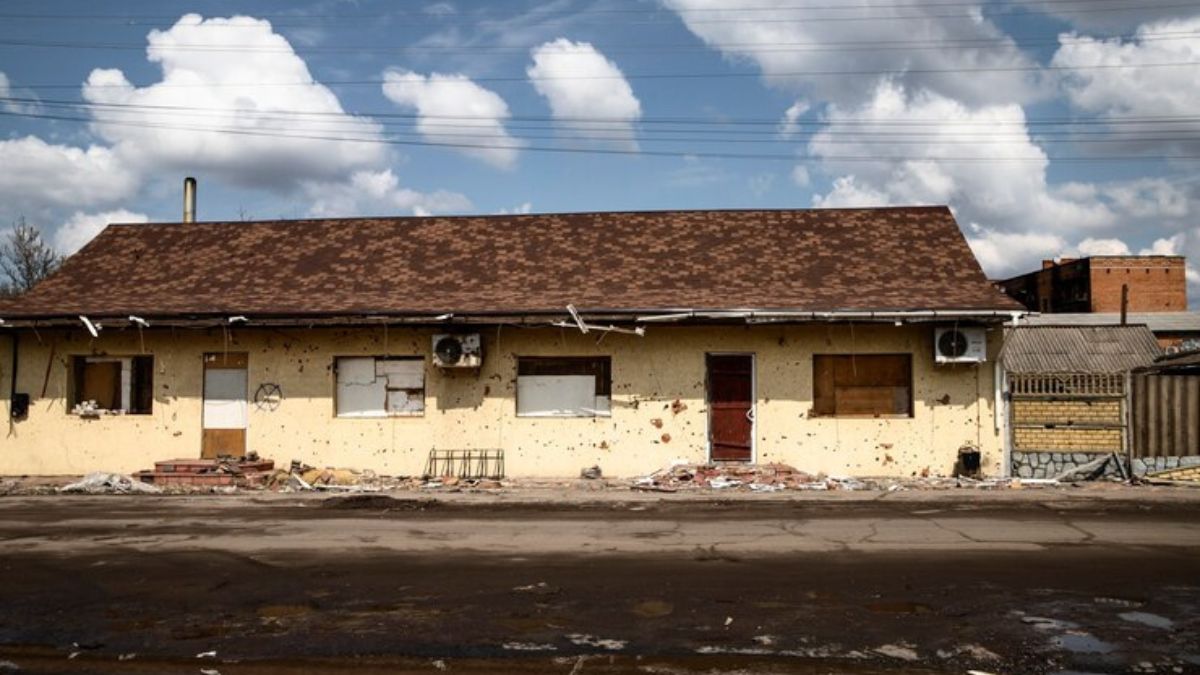HOME
The Ultimate Guide to Protecting Your Property from Natural Disasters

Natural disasters are an inevitable part of life, and their impact can be devastating. Protecting your property from these events requires foresight, preparation, and a solid understanding of the risks involved. Whether you live in an area prone to hurricanes, wildfires, earthquakes, or floods, taking proactive steps to safeguard your home is crucial. This guide will provide you with essential information and practical advice to help you protect your property from natural disasters.
Understanding the Risks: Common Natural Disasters and Their Impact
Natural disasters come in many forms, each with its own unique set of challenges and potential for destruction. In the United States, certain regions are more susceptible to specific types of disasters. For instance, Southern California faces a 75% likelihood of a very large earthquake in the next 30 years. This statistic alone underscores the importance of understanding the specific risks associated with your geographic location.
Hurricanes, for example, are a significant threat to coastal areas, bringing with them high winds, storm surges, and heavy rainfall. Flooding, often the result of hurricanes or heavy storms, can cause extensive water damage to homes and infrastructure. Wildfires, particularly common in the Western United States, can spread rapidly, destroying homes and entire communities in their path.
Earthquakes, while less predictable, can cause catastrophic structural damage, particularly in areas not built to withstand seismic activity. In addition to the immediate destruction, natural disasters can have long-term effects on communities. Studies have shown that natural disasters can lead to a 3-5 percentage-point decrease in the homeownership rate among households that migrate to areas hit by severe disasters.
Understanding these risks is the first step in protecting your property. By being aware of the specific threats in your area, you can take targeted actions to mitigate potential damage.
Assessing Your Property’s Vulnerabilities
Every property has its own set of vulnerabilities when it comes to natural disasters. Assessing these vulnerabilities is crucial to determine the best course of action for protection. Begin by evaluating the age and condition of your home. Older homes may not be built to current safety standards and could be more susceptible to damage from events like earthquakes or hurricanes.
The location of your property also plays a significant role. Homes situated in floodplains, near forests prone to wildfires, or along fault lines require special considerations. Check your property’s elevation, drainage systems, and proximity to potential hazards. This assessment will help you identify areas where your home is most at risk.
In addition to the physical structure of your home, consider the contents inside. Valuable items, important documents, and personal belongings should be safeguarded as well. Understanding your property’s vulnerabilities allows you to take specific, actionable steps to reduce the risk of damage.
Essential Preparations to Safeguard Your Home
Once you’ve assessed your property’s vulnerabilities, the next step is to implement measures to safeguard your home. Start with reinforcing the structure of your home. For those in earthquake-prone areas, this might mean retrofitting your home with seismic straps or bracing for water heaters and other large appliances. In regions where hurricanes are common, installing storm shutters or reinforcing garage doors can help protect against high winds.
Fireproofing your home is essential if you live in an area prone to wildfires. This can include creating defensible space around your home by clearing vegetation, using fire-resistant materials for roofing and siding, and ensuring that vents are covered to prevent embers from entering your home.
Flood protection is another critical consideration. Elevating your home’s foundation, installing sump pumps, and using water-resistant materials for basements and ground floors can significantly reduce flood damage. Additionally, having a proper drainage system around your home can help divert water away from the foundation.
Organizing Important Documents for Emergencies
In the event of a natural disaster, having quick access to important documents is crucial. These documents may include insurance policies, identification, medical records, and financial information. To ensure these documents are safe and easily accessible, it’s important to organize and store them properly.
Start by digitizing physical documents. Scanning important papers and saving them as digital files can provide an added layer of security. These digital files should be stored in a cloud-based service, where they can be accessed from any location, even if your home is damaged.
Converting files from PDF to Word can also be helpful. This conversion allows you to edit and update documents as needed, such as when you need to make changes to your emergency contact list or update your insurance inventory. Keeping both PDF and Word versions of essential documents ensures that you have both a secure, unalterable version and a flexible, editable one.
Store physical copies of documents in a fireproof and waterproof safe. Make sure the safe is easily accessible in an emergency, but also secure enough to protect your documents from potential theft or damage.
The Role of Insurance in Disaster Protection
Insurance plays a vital role in protecting your property from natural disasters. However, not all insurance policies are created equal. It’s important to review your current coverage to ensure it aligns with the risks specific to your region. Standard homeowners insurance typically covers events like fire and theft but may not include protection against floods or earthquakes.
If you live in an area prone to flooding, investing in flood insurance is a must. Similarly, earthquake insurance should be considered if you live in a seismically active region. It’s essential to understand the limits of your policy, including deductibles and coverage caps, so you’re not caught off guard in the event of a disaster.
It’s also wise to document your property and its contents thoroughly. Take photos or videos of your home’s interior and exterior, and keep an inventory of valuable items. This documentation can be invaluable when filing an insurance claim, helping to expedite the process and ensure you receive fair compensation.
Post-Disaster Recovery: Steps to Take After the Storm
Once a natural disaster has passed, the recovery process begins. The first step is to assess the damage to your property. Take detailed photographs and notes to document any damage, as this information will be crucial for insurance claims.
Contact your insurance provider as soon as possible to report the damage. Provide them with the documentation you prepared beforehand, including photos and your home inventory. Be prepared for an adjuster to visit your property to assess the damage.
During the recovery process, prioritize safety. Avoid entering damaged structures until they have been deemed safe by authorities. If your home is uninhabitable, seek temporary shelter while repairs are underway.
In addition to working with your insurance company, consider seeking assistance from local and federal disaster relief programs. These programs can provide financial assistance, temporary housing, and other resources to help you recover.
Community Resources and Support Systems
Community support can be invaluable in the aftermath of a natural disaster. Local organizations, government agencies, and neighbors can all play a role in recovery efforts. Many communities have disaster response plans in place that include shelters, food distribution centers, and emergency medical services.
Familiarize yourself with these resources before disaster strikes. Knowing where to go for help and what services are available can make a significant difference in your recovery.
In addition to formal support systems, consider forming a neighborhood emergency response team. By working together with your neighbors, you can pool resources, share information, and provide mutual support during and after a disaster.
HOME
Waterproof RGB LED Strips: High-Performance Lighting Built for Rain, Heat, and Humidity

Introduction
Lighting is a critical element in creating functional, safe, and visually appealing spaces. Whether you’re illuminating outdoor patios, gardens, commercial walkways, or architectural features, you need lighting solutions that can withstand environmental challenges. This is where Waterproof RGB LED Strip shines. Designed for durability, versatility, and high performance, these LED strips are perfect for applications exposed to rain, heat, or humidity. Paired with a reliable Waterproof Power Supply, they offer long-lasting, vibrant illumination for both residential and commercial projects.
What Are Waterproof RGB LED Strips?
Waterproof RGB LED Strips are LED lighting solutions encased in a protective layer that shields the LEDs from moisture, dust, and external environmental factors. The “RGB” feature means they can produce red, green, and blue colors, allowing users to mix and create millions of colors for mood lighting, accent lighting, or dynamic visual effects.The waterproof design makes these LED strips ideal for outdoor installations. Whether you want to highlight your garden path, illuminate a swimming pool edge, or create colorful lighting for a commercial outdoor space, these LED strips provide reliable performance even under challenging weather conditions.
Benefits of Waterproof RGB LED Strips
Waterproof RGB LED Strips offer multiple advantages over traditional LED lighting. Their main benefit is resistance to water, dust, and heat, which ensures consistent performance regardless of environmental conditions. These strips are energy-efficient, consume minimal electricity, and generate less heat compared to conventional lighting, which makes them both cost-effective and safe.
When paired with a Waterproof Power Supply these LED strips operate smoothly, maintain consistent brightness, and avoid potential damage caused by voltage fluctuations or moisture. This combination ensures a long-lasting and reliable lighting solution for any environment.
Applications of Waterproof RGB LED Strips
The applications of Waterproof RGB LED Strips are vast and varied. In residential settings, they are perfect for outdoor patios, balconies, gardens, and pool areas. Their color-changing capability allows homeowners to create dynamic lighting moods for parties, relaxing evenings, or seasonal decorations.
In commercial spaces, these LED strips are widely used in hotels, restaurants, bars, retail stores, and event venues. They can highlight architectural features, illuminate pathways, or create eye-catching decorative effects. Because they are waterproof and resistant to humidity and heat, businesses can rely on them for long-term performance without frequent replacements or maintenance.
Choosing the Right Waterproof Power Supply
A Waterproof Power Supply is essential for ensuring the safety and efficiency of outdoor LED installations. It protects the system from electrical hazards caused by moisture, rain, or high humidity, and guarantees consistent voltage to the LED strips. Selecting a high-quality waterproof power supply ensures that your Waterproof RGB LED Strips operate at peak performance and maintain their vibrant colors and brightness over time.
When choosing a power supply, consider the total wattage of your LED strips, the IP rating for waterproofing, and the reliability of the manufacturer. Investing in a high-quality power supply prevents malfunctions, extends the life of the LEDs, and provides peace of mind for both residential and commercial installations.
Why Waterproof RGB LED Strips Are Worth the Investment
Investing in Waterproof RGB LED Strips is not just about lighting; it’s about durability, aesthetics, and safety. Their high-performance design ensures that your outdoor spaces remain beautifully illuminated in all weather conditions. Unlike standard LED strips, waterproof versions resist damage from water and humidity, making them ideal for long-term installations.
Paired with a reliable Waterproof Power Supply, these LED strips provide consistent, vibrant, and energy-efficient lighting. For contractors, designers, and homeowners alike, choosing high-quality waterproof LED strips ensures that outdoor spaces look impressive and function reliably year-round.
Conclusion
Waterproof RGB LED Strips are the ultimate solution for high-performance outdoor lighting. Designed to withstand rain, heat, and humidity, these LED strips provide versatile, energy-efficient, and long-lasting illumination for residential and commercial projects. By pairing them with a quality Waterproof Power Supply, you ensure safety, consistency, and vibrant colors for years to come.Whether you are lighting up a garden, a patio, a commercial façade, or a pool area, investing in waterproof LED solutions guarantees that your spaces remain visually stunning, functional, and reliable under any environmental condition.
HOME
Rehabilitation Services: Helping Seniors Regain Independence

The Importance of Independence for Seniors
Maintaining autonomy is a cornerstone of well-being for older adults. Being able to make daily decisions, pursue hobbies, and manage personal routines contributes to both mental and emotional health. Independence fosters confidence, reduces stress, and helps seniors feel in control of their own lives, which can positively impact overall quality of life. Even small acts, like preparing meals or going for a walk, provide a sense of purpose and accomplishment that is essential for maintaining dignity as one ages.
For seniors requiring additional support, selecting the proper care environment can preserve their sense of autonomy while ensuring safety. A skilled nursing home facility Missouri, for example, balances professional medical care with opportunities for residents to engage in meaningful activities and maintain daily routines. This approach enables seniors to receive necessary assistance without compromising their independence or personal autonomy.
Core Components of Rehabilitation: Physical, Occupational, and Speech Therapies
Physical Therapy
Physical therapy aims to restore mobility, improve balance, and enhance strength, particularly for seniors. Custom programs often follow surgeries such as hip or knee replacements, focusing on targeted exercises to expedite recovery and prevent future injuries. Therapists employ various techniques, including stretching, strength exercises, and balance training, to alleviate pain and address mobility challenges, thereby fostering a more active and secure lifestyle for seniors who engage in activities such as walking, gardening, or light sports.
Occupational Therapy
Occupational therapy helps seniors relearn practical skills and daily activities, such as dressing, bathing, and meal preparation, by utilizing adaptive techniques and devices to enhance their independence. Therapists assess and modify environments to enhance safety and accessibility, fostering independence and minimizing accident risks.
Speech Therapy
Speech therapy is essential for individuals with speech or swallowing challenges due to strokes, neurological disorders, or surgery. Therapists create tailored exercises to enhance communication and ensure safe swallowing, thereby improving quality of life and social engagement. Support often includes language exercises, memory training, and speech clarity strategies, with more serious cases benefiting from augmentative and alternative communication tools.
How Technology Is Transforming Rehabilitation
Innovative technologies, such as robotic exoskeletons, motion sensors, and wearable fitness trackers, are significantly enhancing rehabilitation for seniors. These tools offer safe guided movements, real-time feedback, and motivating virtual reality environments, thereby improving rehabilitation outcomes and enhancing senior engagement. Moreover, video-based therapy and telehealth services expand accessibility for seniors in remote areas, allowing them to receive care from home.
The Role of Recreational Activities in Recovery
Recreational activities play a crucial role in senior rehabilitation by complementing traditional therapy. Engaging in hobbies such as gardening, music, or crafts helps alleviate loneliness and depression while promoting gentle physical activity. Activities such as art classes and music therapy foster fine motor skills and cognitive engagement. Group activities enhance social interaction and provide a sense of connection and accomplishment, ultimately improving mental health, strengthening social bonds, and boosting overall wellness, thereby creating an environment conducive to recovery.
Adapting Homes for Independent Living
Simple home modifications for seniors, such as grab bars, ramps, and non-slip flooring, can significantly improve safety and accessibility during rehabilitation. Other enhancements, including wider doorways, better lighting, stair lifts, and accessible bathrooms, are also beneficial. Occupational therapists often suggest personalized adjustments to facilitate mobility and prevent falls, thereby reducing anxiety for both seniors and their families by ensuring a secure living environment.
Community-Based Rehabilitation and Support Programs
Community-based rehabilitation programs, such as PACE, support seniors by providing medical care, therapy, transportation, and social events, thereby promoting independence and reducing hospitalizations. These initiatives address physical, social, and psychological needs, while local resources enhance accessibility and encourage engagement through volunteer work and educational events, thus preventing isolation.
Conclusion
Rehabilitation services are crucial for seniors who wish to maintain their independence. Through the strategic combination of traditional therapies, technological innovations, recreational activities, home modifications, and supportive community programs, older adults are empowered to overcome challenges and lead fulfilling, self-reliant lives. As the field of rehabilitation continues to advance and adapt, more seniors will have the opportunity to enjoy active, independent years with the dignity they deserve.
HOME
The Cultural Significance of Digital Libraries in Modern Society

Quiet Revolutions in Reading
Books have always been more than just paper and ink. They hold stories that shape beliefs memories that span centuries and blueprints for futures not yet written. But the shelf space needed to store all this knowledge? That’s gone digital. Now readers tap rather than turn swipe instead of shelve. The shift toward e-libraries has quietly redrawn the cultural map of reading.
In this reshaped landscape https://z-lib.qa continues to play an essential role in global access to knowledge. More than a platform it functions as a virtual public square where readers from Lagos to Lisbon explore works once locked away in elite institutions. And that matters. Because the kind of access once defined by geography and privilege is now redefined by bandwidth and curiosity.
Where Books Meet Borders
Digital libraries don’t care where someone lives. That’s a radical change. For decades certain texts were simply out of reach—too expensive too obscure or too politically sensitive. Now those same titles appear on screens in seconds. This borderless reach isn’t just convenient. It’s cultural currency.
Imagine a young student in a rural town exploring Renaissance philosophy or Indigenous literature without needing a visa or travel grant. That student gains not just knowledge but a sense of inclusion in a larger conversation. And with global access comes global responsibility. The way people engage with ideas now carries weight far beyond their hometowns.
How E-Libraries Shape Cultural Memory
The past lives online. Every digitized manuscript journal or novel becomes a preserved artifact not just of content but of context. Digital libraries serve as living archives echoing voices that might otherwise be forgotten. When a rare text is scanned and shared it joins a chorus of perspectives that broaden how culture is remembered.
And this isn’t just about old books. New authors self-publish on e-library platforms finding readers without the backing of major publishers. Their stories enter the cultural bloodstream without gatekeepers filtering the flow. Some of these works eventually influence public debates inspire films or stir political discussions. One entry in a digital library can spark something far bigger than itself.
Different Ways Digital Libraries Are Changing the Game
This shift doesn’t just impact what people read but how they engage with the world. Consider three key areas where this change is most visible:
-
Knowledge Without Permission
Traditional libraries often come with sign-up sheets ID checks and limited hours. E-libraries remove these hurdles. Readers no longer wait for books to become available. They download what they need when they need it. That freedom can be a lifeline especially in places with few physical libraries.
-
Diverse Voices Gain Ground
Writers once pushed to the margins now find loyal readers. From queer poets in Manila to historians in Nairobi digital libraries level the playing field. They don’t just reflect culture—they reshape it by elevating new voices and disrupting old hierarchies.
-
Learning Becomes Personal
With countless books at their fingertips readers mix and match topics in ways traditional curricula rarely allow. Someone exploring post-colonial theory might stumble into art history then pivot to climate science. That nonlinear path mirrors how culture really grows—messy layered and full of surprise.
In some corners of the web like reddit communities even share ways to connect with these libraries despite censorship or access barriers. This grassroots energy reflects how deeply people value the ability to read what they choose.
As digital libraries continue growing their influence seeps into everything from how textbooks are updated to how protest slogans are written. Literature no longer waits quietly in stacks. It lives among people on screens and in stories they pass on. The shift is already here. Now it’s just a question of how much further it can go.
-

 HEALTH2 years ago
HEALTH2 years agoIntegrating Semaglutide into Your Weight Loss Plan: A Practical Guide
-

 HOME IMPROVEMENT2 years ago
HOME IMPROVEMENT2 years agoHow to Choose the Perfect Neutral Area Rug for Every Room
-

 LAW1 year ago
LAW1 year agoTeenage Drivers and Car Accidents in California: Risks and Parental Liability
-

 LAW1 year ago
LAW1 year agoPost-Divorce Considerations in California: Modifications and Long-Term Planning
-

 CONSTRUCTION1 year ago
CONSTRUCTION1 year agoConstruction Site Safety Regulations in New York and Your Rights as a Worker
-

 HOME2 years ago
HOME2 years agoSandra Orlow: The Teen Model Who Captivated the Internet
-

 FINANCE1 year ago
FINANCE1 year agoDigital Asset Management in Florida Estate Planning
-

 LAW1 year ago
LAW1 year agoKentucky’s School Football: Concussions, Injuries, and Legal Options
